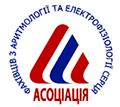Technologies of Diagnosis and Treatment
Recanalization of chronic coronary occlusion, аntegrade approach: indications, modern amenities and own experience
S.М. Furkalo
National Institute of Surgery and Transplantology by O.O. Shalimov of AMS of Ukraine, Kyiv, Ukraine
Chronic coronary artery occlusion is defined as a complete absence of antegrade blood flow in the arteries – TIMI 0 (Thrombolysis in Myocardial Infarction) – with occlusion during more than 3 months after the onset. Revascularization in patients with chronic coronary artery occlusion is directed at following objectives: to facilitate angina, to improve the pumping function, to reduce the need in bypass surgery and risk of subsequent coronary events. According to our data, chronic coronary occlusions is revealed in not less than 30 % coronary angiography procedures. During recent years the introduction of retrograde approach has led to increase of recanalization procedures performed by experts up to 80–90 % or more. We have experience of more than 500 procedures in patients with coronary artery chronic occlusions. Recanalization of chronic occlusion is performed only in the case of proven myocardial viability. Bilateral cannulation of the coronary arteries is mandatory for recanalization, as well as usage of drug-eluting stents. It is necessary to be ready to implant more than one stent.
Key words: coronary artery, occlusion, recanalization, retrograde approach, аntegrade approach.
| [PDF] | [References] |








